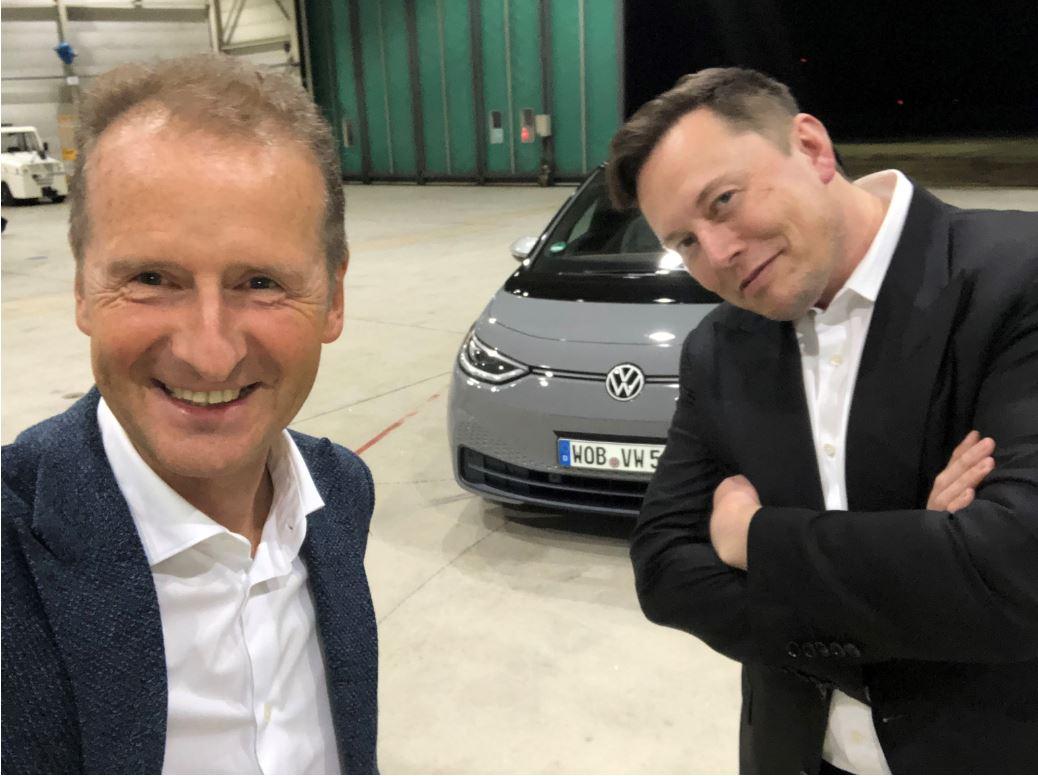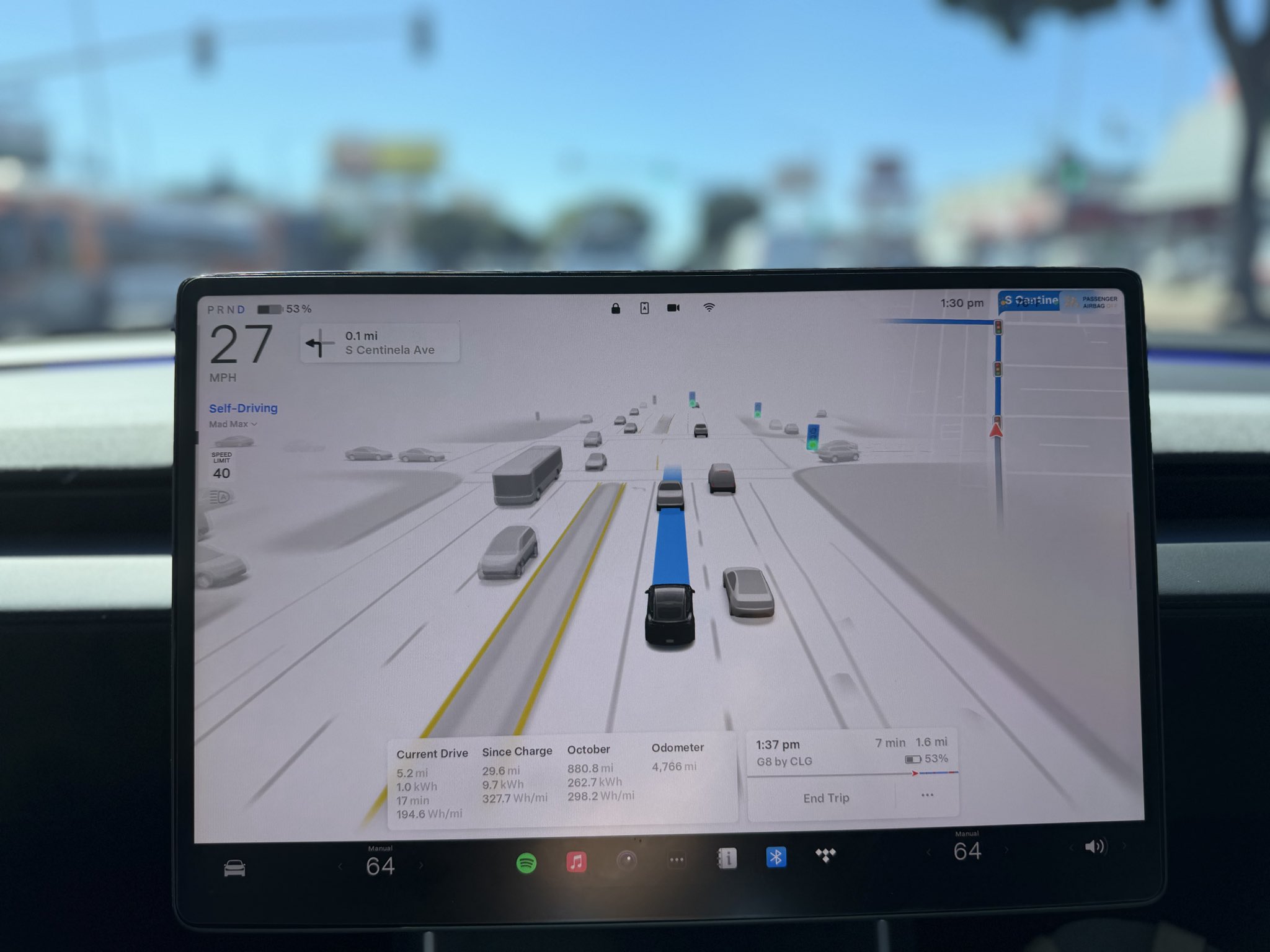

News
Tesla Battery Day vs. Volkswagen Power Day: How Wall Street reacted
Tesla’s Battery Day and Volkswagen’s Power Day were two similar events that showed how the two automakers plan to combat electric vehicle prices within the next few years. Despite the similarities in the events, Wall Street reacted quite differently to both, with Tesla (NASDAQ: TSLA) seeing a minimal effect on its stock in the days following. However, Volkswagen’s stock (OTCMKTS: VWAGY) is soaring over 12% on the day after the event.
Tesla Battery Day
Tesla’s Battery Day was a marquee event for the electric automaker. While the previous year’s focus was Autonomy, 2020 saw battery cells as Tesla’s main concentration. During the event, CEO Elon Musk revealed how Tesla would combat battery prices by continuing to source cells from third-party suppliers, but also by developing its own 4680 cells that are produced by the company in-house. Additionally, new structural battery packs are being used to house the cells and also provide a more robust crash response in the event of an accident. The rigidity of the new structural battery intends to take Tesla’s safety ratings through the roof, where they already reside.
Tesla also revealed plans for a $25,000 car, a blueprint to manufacture 20 million cars per year, and a roadmap to massive cuts in battery cell production costs.
LIVE BLOG: Tesla Battery Day and Annual Shareholder Meeting 2020 updates
Despite the developments, Tesla didn’t receive a big boost on Wall Street. Interestingly, despite the massive developments and plans that Tesla had revealed during the Battery Day event on September 22nd, 2020, the stock closed at $424.23. The day following saw an 11% drop in the stock, as it closed at $380.36.
Many didn’t understand the reason for the drop. Tesla bull and investor Jim Cramer, who was at one time bearish on the automaker’s stock, stated that the stock fell simply because Tesla didn’t announce what some were expecting. “They’re just bummed the things they hyped didn’t happen,” Cramer said. “Tesla rolls out a plan to create an electric car for the masses and greeted with a yawn because Musk didn’t roll out a magic battery. This is what happens when you let expectations get out of control.”
Volkswagen Power Day
Volkswagen’s Power Day was, in effect, the German automaker’s version of Tesla’s Battery Day. The company held an event outlining their plans for cell cost reductions, along with plans for six total production plants across Europe. VW also has established several partnerships with European energy companies to roll out an expansive charging infrastructure, among many other developments.
“We aim to reduce the cost and complexity of the battery and at the same time increase its range and performance,” Volkswagen Group Board Member for Technology Thomas Schmall said. “We will use our economies of scale to the benefit of our customers when it comes to the battery too. On average, we will drive down the cost of battery systems to significantly below €100 per kilowatt-hour. This will finally make e-mobility affordable and the dominant drive technology.”
Volkswagen’s Power Day: Six new cell plants, new unified battery cell, charging network partnerships
Volkswagen stock began Monday’s trading session at $28.38. After the developments that VW announced, the stock shot up $1.38, a boost of 4.86%. However, the German company’s stock is enjoying massive gains today, just one day after the big event. After closing at $29.76 yesterday, VW stock has increased another 3.48% at the time of writing, for a total gain of 11.69% as of 2:30 PM EST.
The differences in the presentations and how Wall Street has responded to them are unknown. However, the sheer size of Volkswagen’s production figures could be the main reason for the increased investor response. While Tesla’s rollout of 500,000 vehicles in 2020 was a company best, Volkswagen delivered 9.3 million vehicles last year. For context, VW has also been around since 1937, while Tesla has only produced a mass-market vehicle since 2017.
Tesla is undoubtedly the leader in electric vehicles. Volkswagen, while still working out software kinks, could be considered second-place by some because of the successful adaptation of the ID. family of vehicles in Europe so far. However, it is still admittedly ironing out some software issues with its MEB platform, and it seems somewhat odd that VW’s stock received such a healthy boost in the day following its Power Day event.
What do you think? What is the reasoning for the substantial difference in Wall Street’s reaction? Let us know in the comments below, or Tweet me directly.
Disclosure: Joey Klender is a TSLA Shareholder.

News
Tesla FSD Supervised ride-alongs in Europe begin in Italy, France, and Germany
The program allows the public to hop in as a non-driving observer to witness FSD navigate urban streets firsthand.

Tesla has kicked off passenger ride-alongs for Full Self-Driving (Supervised) in Italy, France and Germany. The program allows the public to hop in as a non-driving observer to witness FSD navigate urban streets firsthand.
The program, detailed on Tesla’s event pages, arrives ahead of a potential early 2026 Dutch regulatory approval that could unlock a potential EU-wide rollout for FSD.
Hands-Off Demos
Tesla’s ride-along invites participants to “ride along in the passenger seat to experience how it handles real-world traffic & the most stressful parts of daily driving, making the roads safer for all,” as per the company’s announcement on X through its official Tesla Europe & Middle East account.
Sign-ups via localized pages offer free slots through December, with Tesla teams piloting vehicles through city streets, roundabouts and highways.
“Be one of the first to experience Full Self-Driving (Supervised) from the passenger seat. Our team will take you along as a passenger and show you how Full Self-Driving (Supervised) works under real-world road conditions,” Tesla wrote. “Discover how it reacts to live traffic and masters the most stressful parts of driving to make the roads safer for you and others. Come join us to learn how we are moving closer to a fully autonomous future.”
Building trust towards an FSD Unsupervised rollout
Tesla’s FSD (Supervised) ride-alongs could be an effective tool to build trust and get regular car buyers and commuters used to the idea of vehicles driving themselves. By seating riders shotgun, Tesla could provide participants with a front row seat to the bleeding edge of consumer-grade driverless systems.
FSD (Supervised) has already been rolled out to several countries, such as the United States, Canada, Australia, New Zealand, and partially in China. So far, FSD (Supervised) has been received positively by drivers, as it really makes driving tasks and long trips significantly easier and more pleasant.
FSD is a key safety feature as well, which became all too evident when a Tesla driving on FSD was hit by what seemed to be a meteorite in Australia. The vehicle moved safely despite the impact, though the same would likely not be true had the car been driven manually.
News
Swedish union rep pissed that Tesla is working around a postal blockade they started
Tesla Sweden is now using dozens of private residences as a way to obtain license plates for its vehicles.

Two years into their postal blockade, Swedish unions are outraged that Tesla is still able to provide its customers’ vehicles with valid plates through various clever workarounds.
Seko chairman Gabriella Lavecchia called it “embarrassing” that the world’s largest EV maker, owned by CEO Elon Musk, refuses to simply roll over and accept the unions’ demands.
Unions shocked Tesla won’t just roll over and surrender
The postal unions’ blockade began in November 2023 when Seko and IF Metall-linked unions stopped all mail to Tesla sites to force a collective agreement. License plates for Tesla vehicles instantly became the perfect pressure point, as noted in a Dagens Arbete report.
Tesla responded by implementing initiatives to work around the blockades. A recent investigation from Arbetet revealed that Tesla Sweden is now using dozens of private residences, including one employee’s parents’ house in Trångsund and a customer-relations staffer’s home in Vårby, as a way to obtain license plates for its vehicles.
Seko chairman Gabriella Lavecchia is not pleased that Tesla Sweden is working around the unions’ efforts yet again. “It is embarrassing that one of the world’s largest car companies, owned by one of the world’s richest people, has sunk this low,” she told the outlet. “Unfortunately, it is completely frivolous that such a large company conducts business in this way.”
Two years on and plates are still being received
The Swedish Transport Agency has confirmed Tesla is still using several different workarounds to overcome the unions’ blockades.
As noted by DA, Tesla Sweden previously used different addresses to receive its license plates. At one point, the electric vehicle maker used addresses for car care shops. Tesla Sweden reportedly used this strategy in Östermalm in Stockholm, as well as in Norrköping and Gothenburg.
Another strategy that Tesla Sweden reportedly implemented involved replacement plates being ordered by private individuals when vehicles change hands from Tesla to car buyers. There have also been cases where the police have reportedly issued temporary plates to Tesla vehicles.
News
Czech Deputy excited for Tesla FSD, hints at Transport Committee review
The ANO party lawmaker shared his thoughts about FSD in a post on social media platform X.

Martin Kolovratník, a Czech Republic Chamber of Deputies member, has expressed his excitement for Tesla’s Full Self-Driving (FSD) after an apparent constituent called for a quick approval for the advanced safety system.
The ANO party lawmaker, who drives both diesel and EV, shared his thoughts about the matter in a post on social media platform X.
The official’s initial statements
Kolovratník kicked off the exchange with a post outlining his coalition’s efforts to scrap highway toll exemptions for electric vehicles and plug-ins starting in 2027.
“Times have changed. Electric vehicles are no longer a fringe technology, but a full-fledged part of operations. And if someone uses the highway network, they should follow the same rules as everyone else. That’s the basis of fairness,” he wrote.
He emphasized equity over ideology, noting his personal mix of diesel and electric driving. “For this reason, there is no reason to continue favoring one technology at the expense of another… It’s not about ideology, it’s about equal conditions. That’s why we clearly agreed within the new coalition: the exemption for electric vehicles and plug-ins will end in 2027. The decision is predictable, understandable, and economically sound.”
Tesla FSD enthusiasm
The conversation pivoted to Tesla’s FSD when X user @robotinreallife, who seems to be one of the official’s constituents, replied that other matters are more important than ending highway exemptions for EVs.
“I’m happy to pay for the highway, but I have a question about a much more fundamental matter: The Netherlands will approve the operation of Tesla FSD in February 26, a technology that has been proven to reduce accidents. The Czech Republic has the option to immediately recognize this certification. Do you plan to support this step so that we don’t unnecessarily delay?” the X user asked.
Kolovratník responded promptly, sharing his own excitement for the upcoming rollout of FSD. “I know about it. I like it and it seems interesting to me. Once we set up the committees and subcommittees, we’ll open it right away in that transport one. Thanks for the tip, I’ll deliver the report,” the official noted in his reply on X.
Kolovratník’s nod to FSD hints at the system’s potentially smooth rollout to Czechia in the coming year. With the Netherlands possibly greenlighting FSD (Supervised) in early 2026, Kolovratník’s commitment could accelerate cross-border certification, boosting FSD’s foray into Europe by a notable margin.









